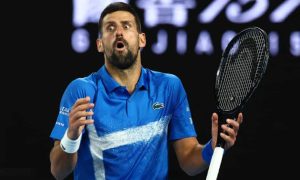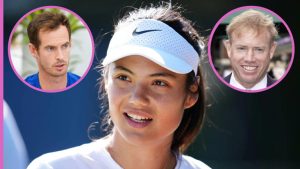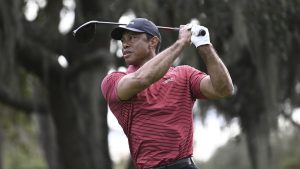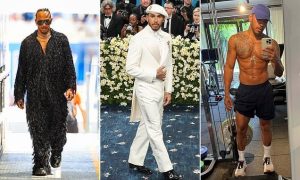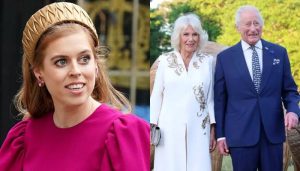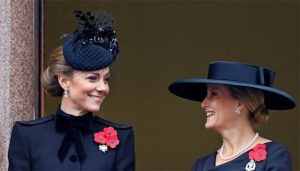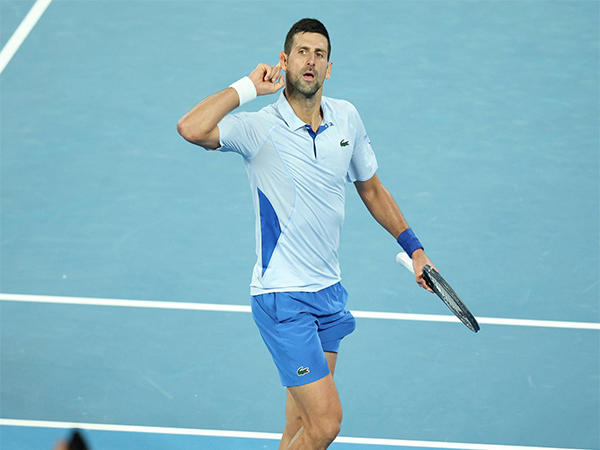
Record-chaser: Novak Djokovic © ANDREJ ISAKOVIC / AFP
Reigning Roland-Garros champion Novak Djokovic has a dual-quest on clay in 2024 – to win a stand-alone 25th Grand Slam singles title in the sport and finally land that elusive Olympic gold medal. Paul Hassall was at the Monte-Carlo Country Club to watch the Serb’s first match of the season on the surface at the Monte-Carlo Masters in what could yet be his most memorable ever on La Terre Battue.
Heading into the Monte-Carlo Masters, two-time champion Novak Djokovic (2013, 2015) had spoken of low expectations in terms of landing what would be a record-extending 41st Masters 1000 title.
It was his first competitive tour match since a shock third round loss to lucky loser Luca Nardi in Indian Wells, while his semi-final exit to eventual winner Jannik Sinner at the Australian Open back in January had cracked the air of invincibility from a stellar 2023.
It only added to the intrigue as to how the top seed would shape up on his return to action, with the crowd on Court Rainier III waiting patiently to see the world No. 1 as early rain delayed the day’s play by two hours.
Novak Djokovic was third up on the MCCC’s main court and he proved to be the highlight of Day 4 for many of the spectators as he comfortably ousted Roman Safiullin in straight sets (6-1 6-2) in his first outing on clay since he lifted his third Roland-Garros crown last June.
There were a few shakes of the head here and there as Nole, ever the perfectionist, still managed to lament some wasted break opportunities despite unlocking the Russian’s serve on no fewer than five occasions
There’s no doubt the top seed has several additional gears to move through but overall he admitted he was “very pleased” with what was a very promising and perhaps ominous start to the clay swing for the Serb.
A fourth Roland-Garros title and a standalone 25th singles major in the sport is clearly on his radar with his preparations in recent years always centred upon peaking for the second Grand Slam of the year in Paris rather than being overly concerned with results in the first few tournaments of the European leg on the red dirt.
Indeed, Djokovic has not gone beyond the quarter-finals here since he lifted the trophy for the second time in 2015, and he has not made it beyond round three since 2019.
It has rarely stopped him from hitting a high level by Rome and being a major contender at Roland-Garros, where he has won two of the last three editions.
However, this year there is a unique difference.
Both Djokovic and his former coach Goran Ivanisevic have made it pretty clear that his priority – even above another major – is that elusive Olympic gold medal, which remains the surprising omission from his glittering CV.
This will be the Serb’s fifth Olympics and he is keenly aware that he has yet to produce his best tennis there.
In 2008 he won bronze after being edged out by eventual gold medallist Rafael Nadal in the last four, while in London in 2012 it was Andy Murray who took down the Serb at the same stage.
A narrow first-round defeat to Juan Martin del Porto prematurely ended his hopes in Rio in 2016 before his most recent attempt in 2020 saw eventual champion Alexander Zverev come from a set down to defeat the red-hot favourite in the last four with a surprise loss to Pablo Carreno Busta then seeing him miss out on a second bronze.
At this summer’s Games in Paris, Djokovic will be 37 and it will surely represent his last chance to strike gold.
That self-imposed pressure, as well as an unfamiliar roadmap to Olympic success, makes it all the more tricky for the Belgrade native.
https://x.com/DjokerNole/status/1777761922378760306
His attempts to successfully defend a French Open title for the first time will be followed by a transition to grass for Wimbledon, before a rare but highly significant shift back to clay for the Paris Olympics, which will take place at Roland-Garros.
It is not a schedule many players will have navigated before, given that clay to grass is widely perceived to be the most difficult surface adjustment of the season and a sharp reverse back to the dirt could perhaps prove complicated for what will be the first Games on clay since Barcelona in 1992.
With all of that in mind, these early steps are highly significant, and for Djokovic, they are all part of a process to fine-tune his clay-court game for when he feels it matters most.
Next up in Monte-Carlo, he meets Lorenzo Musetti on Thursday at the same third-round stage where the Italian stunned Nole last year.
Masterful start 👏@DjokerNole eases past Safiullin 6-1 6-2 @ROLEXMCMASTERS | #RolexMonteCarloMasterspic.twitter.com/2IR3odHgcC
— ATP Tour (@atptour) April 9, 2024
Pride will no doubt ensure revenge will be on the world No. 1’s agenda – and he is keenly aware he has yet to land a title this year with a record of 9-3 overall – but it is still all short-term in relation to his longer-term goal.
Whether or not success in Monte Carlo materialises in the shape of a third winner’s trophy at the MCCC come Sunday remains to be seen, but he has already suggested anything like that would be a “bonus”.
The growing uncertainty over ‘King of Clay’ Rafael Nadal’s fitness and ability to hit previous unparalleled heights, coupled with the fact NextGen stars Carlos Alcaraz and Jannik Sinner have yet to truly lay down major markers at Roland-Garros means Djokovic will again feel he will be the man to beat on the Parisian red dirt if he can find his optimum level.
It hasn’t been there so far in 2024 but it would take a brave person to bet against a man who has pretty much done it all when it comes to major achievements in the sport.
